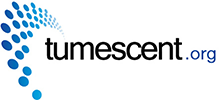Tumescent Technique – Tumescent Anesthesia and Microcannular Liposuction
This Liposuction Textbook was written by the inventor of Tumescent Local Aesthesia and Tumescent Liposuction, Dr. Jeffrey A. Klein.
Xylocaine – Chemistry, Pharmacology and Clinical Applications
The scientific and clinical development of Xylocaine has been as remarkable as it has been rapid. Synthesized only as recently as 1943. it is currently regarded as one of the safest and most reliable of the local anesthetics that are in common use today.
LOCAL ANESTHETICS - Mechanisms of Action and Clinical Use
Local anesthesia may be defined as a loss of sensation in a circumscribed area of the body due to a depression of excitation in nerve endings or an inhibition of the conduction process in peripheral nervous tissue. This localized state of anesthesia may be produced by such different means as mechanical trauma, low temperature, anoxia, and a variety of chemical irritants. In general, only substances that produce a transient and completely reversible state of insensibility are employed in clinical practice. Neurolytic agents such as alcohol or phenol may be useful to induce a relatively permanent state of anes-thesia in patients with intractable pain.
Two Lectures on The Primary and Secondary Treatment of Burns
THE following Lectures were addressed to the pupils attending my clinical class, and were· intended solely for their instruction.
The principles which they inculcate I have endeavored to enforce, by precept and ex-ample, for many years.
